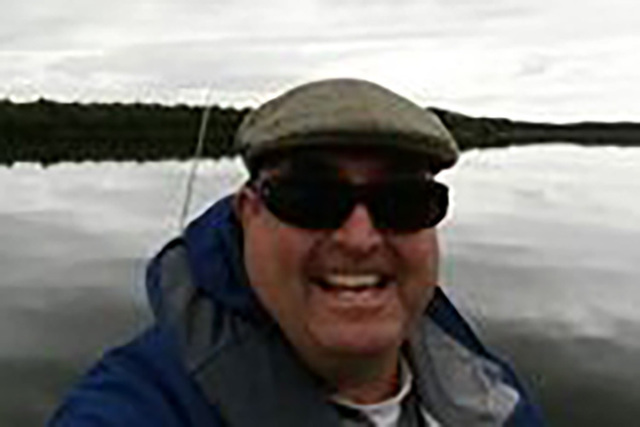Fly-fishing for Scottish pike brings adventure to vacation

Despite the algae bloom on the lake’s surface, I could easily see the red-colored head of my fly and behind it the fly’s silver mylar tail. The fact that the fly was large didn’t hurt, but its size was not for my benefit, nor was its flashy coloring. They were intended for one thing, catching my toothy quarry.
Though our main purpose in traveling to Scotland was for our daughter’s college graduation, I couldn’t overlook the chance to experience fly-fishing in the birthplace of the sport. While most anglers who travel to Scotland do so with the intention of catching monster brown trout, I was looking for a different experience. I wanted to catch something I had never caught on a fly. I was after Scotland’s pike.
Unlike trout patterns that have specific names, the big flies used for Scottish pike are simply called pike flies, said Ken Wood of Scotia Fishing, my guide for the day.
Under his tutelage, I was working weed beds and other structure along the shoreline of Portmore Loch, a small private water located in the Scottish Borders area south of Edinburgh. Our platform for the day was what Wood called a traditional Scottish fishing boat powered by an electric trolling motor. Gas-powered motors aren’t allowed.
Casting the heavy pike fly took some practice, and despite using a 9-weight rod, it was readily apparent that timing was everything. Wood told me as much before we started, explaining I needed to be patient on back cast. I cast the fly toward a dark hole between two small stands of brush. It landed with an audible splash — luckily such sounds actually attract predatory fish.
As the heavy fly sunk quickly out of sight, I began stripping it back toward the boat using a slow, 8-inch retrieve. Strip, strip, strip. Bam! There was a silvery flash, and the fly suddenly halted — but only for a brief second.
I missed the fish. I lowered my head in self-disgust, but Wood said, “He’ll come back!”
So I left the fly where it was, moving it slightly. Just enough to make it look like something in trouble.
Then from the darkness below, a silvery shadow appeared. It first moved under and then past the fly. The pike did come back, and it was stalking my fly.
Then suddenly the fish turned back and circled the fly. Coming at it from behind, the pike opened wide its mouth full of teeth and the fly disappeared. I set the hook, and the pike was mine.
Our battle was brief, and Wood deftly netted the fish. He held the fish just long enough to remove the fly, snap some photos and set him free. They take catch-and-release fishing seriously in Scotland.
By lunch, I had brought more than 12 pike to the boat and missed a few others. The most productive spot on the lake was a weed bed that provided cover for hungry jacks, male pike recovering from the spawn and licking their wounds, so to speak, inflicted by large females. They sometimes eat the smaller males. Those who avoid being eaten carry the scars documenting their close encounters.
By casting the fly parallel to and within a few of the weed bed, I managed to lure a handful of jacks from their hiding place. That kind of action took its toll on the pike fly, so after lunch, we swapped to another pattern. This one was a large, white buck tail fly with a reddish head.
Again, I cast into a dark hole between some brush. As the fly came back toward the surface, a jack came out of the darkness and circled the fly. I let it sink again, and the fish swallowed it.
Then, as the fish and I began doing battle, a much larger pike suddenly darted in and took a swipe at the fish on my line. Luckily for me and the fish on my line, the large pike missed its mark and disappeared into the darkness. The last thing I remember is seeing a large tail fade into the depths.
With that take, my day was over and we made our way back to the dock. I had caught and released 15 or 16 fish while being serenaded by rooster pheasants crowing from the green-grass-covered hills and woods surrounding the lake, but it’s two spectacular takes that will make my Scottish pike fishing adventure memorable.
Summer months are a busy time for fishing guides in Scotland, so you have to schedule early. Plan to bring rain and cold-weather gear. More information can be found at scotiafishing.com.
Freelance writer Doug Nielsen is a conservation educator for the Nevada Department of Wildlife. His “In the Outdoors” column, published Thursday in the Las Vegas Review-Journal, is not affiliated with or endorsed by the NDOW. Any opinions he states in his column are his own. He can be reached at intheoutdoorslv@gmail.com.